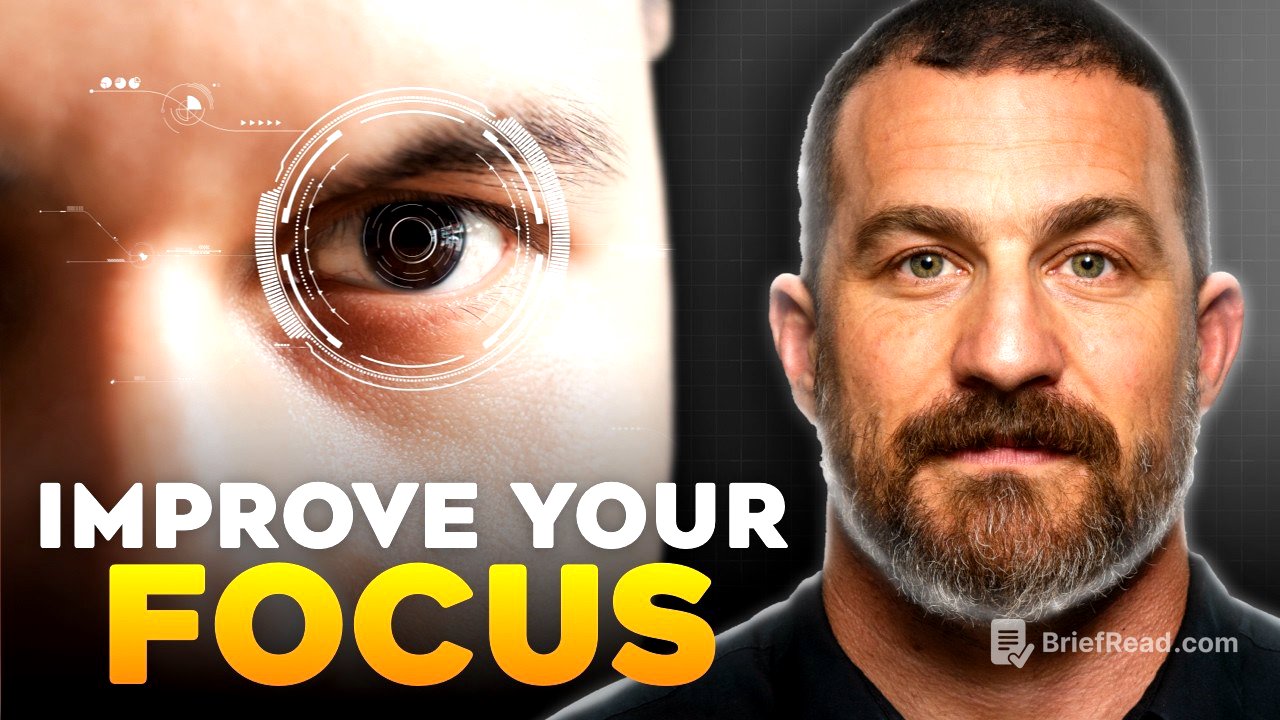TLDR;
This video explains how to improve mental focus by leveraging the connection between visual and mental attention. It highlights the importance of visual focus as a tool to enhance cognitive abilities, discussing how focusing your eyes can trigger the release of key neurochemicals that support learning and plasticity. The video also addresses the challenges of maintaining focus in a world filled with distractions, particularly from phones and other devices, and offers practical strategies for creating an environment conducive to deep, sustained concentration.
- Mental focus is closely linked to visual focus.
- Practising visual focus can enhance mental focus abilities.
- Limiting distractions, especially from phones, is crucial for maintaining concentration.
Introduction to Focus and Visual System [0:00]
The video introduces the concept that mental focus is intrinsically linked to the visual system. It explains that just as our visual focus can be sharp and precise or unfocused and blurry, we can use our visual abilities to enhance our mental focus. The key to accessing neuroplasticity lies in understanding and utilising this connection between visual and mental attention.
Alertness and Neurotransmitters [0:43]
The discussion moves to the role of alertness in plasticity, noting that alertness can be achieved through various means, including emotions or substances like caffeine. The speaker touches on the use of Aderall, highlighting that while it increases alertness by releasing epinephrine, it doesn't directly enhance focus through the acetylcholine system. The speaker warns against relying on Aderall due to its potential for abuse and habit formation, advocating instead for behavioural practices rooted in visual focus to develop deeper and more sustained concentration.
The Mechanics of Visual Focus [2:40]
The speaker explains the mechanics of visual focus, detailing how we can focus on a small area with high detail or dilate our gaze to see a larger area with less detail. When we focus, our eyes align, and the lens adjusts to create a "soda straw" view with higher resolution. This visual focus is directly linked to brain activity, triggering the release of norepinephrine, epinephrine, and acetylcholine, which are crucial for plasticity and learning.
Practical Application of Visual Focus [4:57]
The video provides practical advice on how to use visual focus to improve mental concentration. If you're struggling to focus while reading or listening, practice focusing your visual system at the same distance as your work. Staring at a small window on your screen for 60 to 120 seconds can increase visual acuity and activate brain areas associated with information gathering. Maintaining a steady gaze, even with the urge to blink, can be a powerful tool for controlling focus.
ADHD, Phone Usage, and Modern Distractions [7:16]
The speaker addresses the impact of modern distractions, particularly phones, on our ability to focus. The design of phones, with their small screens and motion-filled content, makes it easy to anchor attention but can worsen our ability to concentrate on less stimulating tasks like reading. The speaker suggests being mindful of how much time and neurochemical resources are devoted to passive experiences versus active learning.
Sustaining Focus and Eliminating Distractions [10:55]
The video discusses the importance of sustaining focus during learning bouts, which typically last around 90 minutes. It's normal to have a warm-up period, but the goal is to maintain focus for about an hour in the middle of the session. Eliminating distractions, such as turning off Wi-Fi and removing phones from the environment, is crucial. The speaker encourages experiencing complete immersion in an activity, continually re-anchoring attention back to the task at hand using visual focus.









